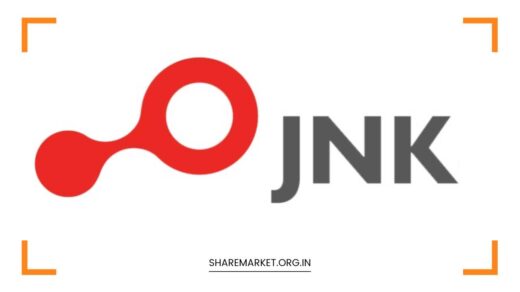RBI Cuts Repo Rate to 6.25%: How Much Can You Save on Home and Auto Loan EMIs?

RBI
RBI Cuts Repo Rate to 6.25%: How Much Can You Save on Home and Auto Loan EMIs?
In a significant move aimed at stimulating economic growth, the Reserve Bank of India (RBI) has reduced its repo rate by 25 basis points (bps), bringing it down from 6.5% to 6.25%.
This marks the first rate cut by the RBI in almost five years, with the last reduction occurring in May 2020.
The decision to lower the repo rate is expected to have a direct impact on the financial landscape, especially for individuals with home loans, auto loans, and other forms of credit.
The Impact of the Repo Rate Cut on Loan EMIs
The repo rate, which is the rate at which the RBI lends money to commercial banks, plays a crucial role in determining interest rates on loans.
A reduction in the repo rate makes borrowing cheaper for banks, and in turn, banks often pass on these benefits to borrowers by lowering the interest rates on loans.
With the recent reduction to 6.25%, borrowers can expect to see a decrease in their Equated Monthly Installments (EMIs) for home and auto loans, which could result in significant savings over time.
Home Loan EMIs: A Significant Saving Opportunity
For home loan borrowers, even a small reduction in the interest rate can lead to notable savings. Let’s take an example: if you have a ₹50 lakh home loan with a tenure of 20 years and an interest rate of 8%, the EMI before the repo rate cut would be approximately ₹43,524.
With the new interest rate of 7.5% (assuming banks pass on the full rate cut), the EMI could reduce to ₹42,496, resulting in savings of ₹1,028 per month. Over the life of the loan, this could mean total savings of approximately ₹2.46 lakh.
If the rate cut is more substantial, for instance, a 0.75% reduction in the interest rate, the savings could increase.
The EMI in this scenario would drop to ₹41,971, which translates to ₹1,553 in monthly savings and ₹3.73 lakh in total savings over the course of the loan.
Auto Loan EMIs: Modest Savings, But Noteworthy
For auto loan borrowers, the savings will be relatively smaller due to the shorter tenure of auto loans. Consider a ₹10 lakh auto loan with a tenure of 5 years.
Before the repo rate cut, the interest rate might have been 9.5%, with an EMI of ₹20,860. After the rate cut to 9%, the EMI could decrease to ₹20,277, offering a savings of ₹583 per month.
Over the course of 5 years, this would result in total savings of approximately ₹34,980.
If the rate cut were more significant, for instance, a 1% reduction to 8.5%, the EMI would further drop to ₹19,693, providing a savings of ₹1,167 per month, or around ₹70,020 over the life of the loan.
Total Interest Savings
Beyond just the reduction in monthly EMIs, the total interest savings over the life of the loan could also be considerable.
For instance, with a home loan of ₹50 lakh at an interest rate of 7.5% over 20 years, the total interest paid before the rate cut would be around ₹41.7 lakh.
After the rate cut, with the interest rate reduced to 7.5%, the total interest would decrease to approximately ₹39.8 lakh, leading to savings of about ₹1.9 lakh in interest payments over the life of the loan.
The Broader Economic Impact
While the rate cut directly benefits home and auto loan borrowers, it also signals a shift in the RBI’s approach to economic growth.
With global economic uncertainty and challenges such as trade tensions and inflation risks, the RBI’s decision to cut rates is seen as an effort to support domestic growth and provide liquidity to the economy.
This accommodative stance is expected to help businesses and individuals alike by making borrowing cheaper, thereby stimulating investment and consumption.
RBI Governor Shaktikanta Das emphasized that the decision is part of the central bank’s efforts to balance inflation control with fostering economic growth, especially in the face of global challenges.
The RBI’s shift in stance from “neutral” to “accommodative” indicates that further rate cuts could be on the horizon, with some experts predicting that the repo rate could be reduced by up to 75 basis points throughout 2025.
What Should Borrowers Do?
With the current rate cut, home and auto loan borrowers stand to benefit by reducing their EMIs. However, to maximize the benefit, here are a few things to consider:
- Refinance Your Loan: If your bank has not automatically reduced the interest rate on your loan, consider refinancing your loan to take advantage of the lower rates. This could lead to a reduction in your monthly payments or a reduction in your loan tenure.
- Prepay Your Loan: If you have the financial flexibility, consider prepaying your loan, either partially or in full. Prepaying will reduce your principal balance and save you money on interest payments in the long run.
- Monitor Interest Rates: Keep an eye on further rate cuts by the RBI, as well as adjustments by your bank. You may have the opportunity to benefit from additional reductions in the near future.
- Fixed vs. Floating Rates: If you have a floating rate loan, the rate cut will directly affect your EMIs. If you have a fixed-rate loan, the impact will not be immediate, but you may want to explore refinancing options as rates continue to drop.
Final Remarks: Make the Most of the Repo Rate Cut
The RBI’s decision to reduce the repo rate to 6.25% offers borrowers a chance to reduce their financial burdens, especially for those with long-term commitments like home and auto loans.
Even a small reduction in interest rates can result in substantial savings in terms of EMIs and interest payments over time.
With the possibility of further rate cuts in the near future, it’s an ideal time for borrowers to review their loan terms and take advantage of these changes.
As always, it’s important to check with your bank about how the repo rate cut affects your specific loan and explore opportunities for refinancing or prepayment to optimize your savings.

















